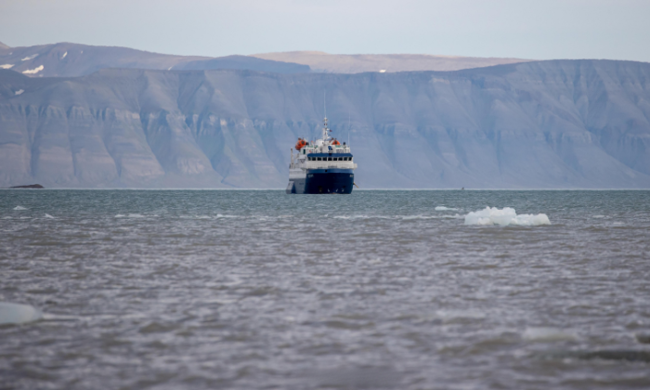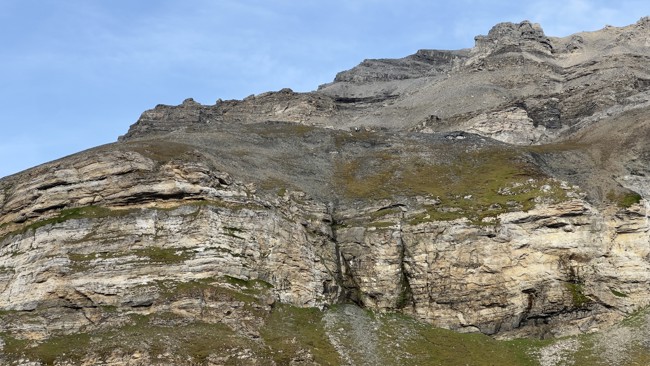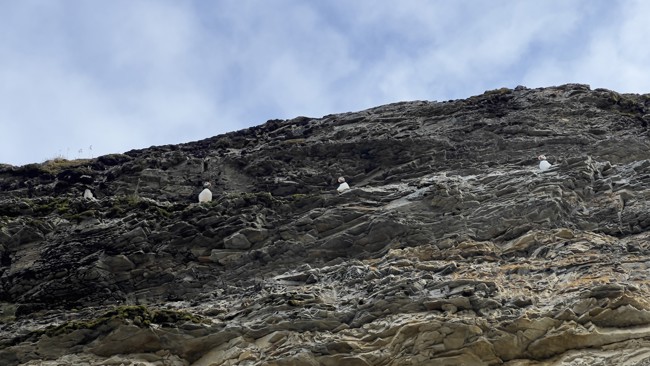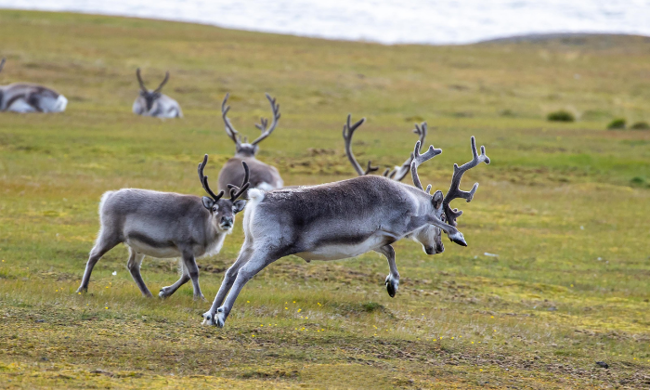The final morning of our expedition had arrived. Over the past days, despite the Arctic throwing mist, wind, and swell our way, we had been fortunate to experience unforgettable wildlife encounters. Still, one thing had been missing: those far stretching sights of Svalbard’s dramatic landscapes bathed in sunlight. As if saving the best for last, the day greeted us with clear skies, calm seas, and the promise of something special.
Our destination was Alkhornet, one of the most iconic landmarks of Isfjorden. The 428-metre-high cliff rises almost vertically from the tundra and is crowned with thousands of nesting seabirds. Each year, Arctic foxes patrol the slopes below, opportunistically seeking fallen eggs or chicks, while reindeer graze on the lush tundra nourished by centuries of seabird guano. It is a place we often return to during our voyages, and yet, it never fails to surprise.


This morning, the conditions allowed us to try something new. The captain told us about an alternative landing site near Alkhornet that is rarely accessible, due to swell and wind exposure. To our delight, the sea was calm enough to attempt it. We launched four Zodiacs and first headed for a remarkable coastal cave. The entrance was wide enough to hold all our boats at once, and inside we discovered a hidden world of shadows, and the salty smell of seaweed. At the back of the cave, a smaller tunnel led further in, low enough that only those willing to crawl could squeeze through. It was an adventurous start to our morning.
A short ride later, we landed on a small beach further along the coast. From here, the entire group set off across the gently sloping tundra, its late-summer vegetation dotted with mosses, lichens, and tiny flowers clinging to life in the harsh Arctic climate. At the base of Alkhornet’s towering cliffs, we split into smaller groups. With the “mountain goats,” I joined the climb up a steep, grassy slope alongside a small waterfall. The ground was soft underfoot, thick with centuries of vegetation, and above us the cliff resonated with the constant murmur of seabirds.


It didn’t take long before we came eye-to-eye with puffins. Their comical expressions and impatient growls greeted us at first, as if annoyed at our presence. But curiosity soon got the better of them, and several birds leaned over the edge, peering down at us with their colourful beaks glowing in the sun. From the slope we also spotted a flash of movement, an Arctic fox darting across the tundra below, nose to the ground in search of food. A brief but beautiful glimpse of the predator that so perfectly belongs in this landscape.
After spending time with the puffins, we carefully descended the same slope and continued our walk across the tundra. Ahead of us, reindeer grazed peacefully, their antlers velvet-covered and their movements unhurried. Moving slowly and quietly, we approached as close as possible without disturbing them, taking time to simply watch these gentle Arctic inhabitants go about their morning.
Eventually, it was time to head back towards the Zodiacs. The sun still shining warmly over Isfjorden as we returned to the ship, appetite sharpened by fresh air and the hike. Over lunch, we reflected on how perfectly this last landing had captured the essence of Svalbard: wildlife, adventure, breathtaking scenery, and the quiet privilege of simply being present in this extraordinary place.

Please note: Depending on the lens used for a photo or video shot an animal may appear to be closer than it is. We always follow strict wildlife guidelines to ensure that we do not cause any disturbance.


